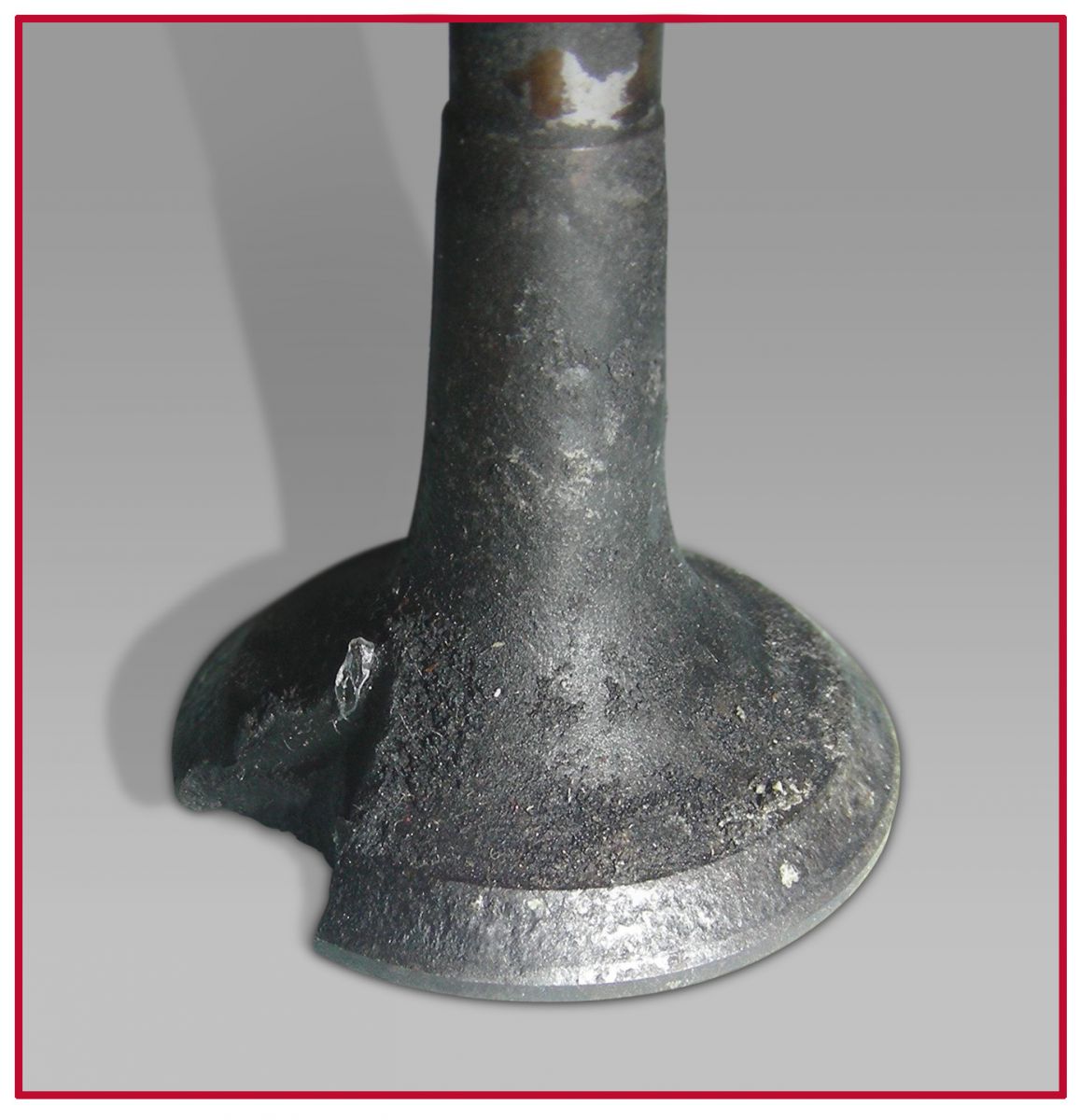Top End

Valve face wear and burningIf you only ever work on modern engines, valve face wear is not a problem you’re likely to come across. But face wear can still occur in older engines, and valve face burning can happen on any engine. So it’s worth knowing the causes, and the cures.
Many modern engines use stellite to give their exhaust valves a hard facing. This is more effective at resisting wear, which is why you won’t see face wear in a modern engine. But earlier engines were designed to rely on the valve being lubricated by the products of combustion as a way of stopping wear from happening.
This was fine until the introduction of low-leaded and LPG fuels. These produce dryer, lubrication-free exhaust gases, and the result is unlubricated valve faces.
That on its own is not necessarily a problem in a properly adjusted engine. But combine it with slack tappets, weak springs, or valve to port seat misalignment, and the unlubricated exhaust valve seat can suffer a heavy pounding, which can result in serious wear.
In for trouble The inlet valve can also suffer from face wear, but this only ever happens on turbocharged diesel engines.
The idea behind turbocharging, of course, is to increase pressure during the induction stroke. However, a side effect is an increase in air pressure in the inlet port – to a pressure that’s higher than normal atmospheric air pressure.
The result is that lubricating oil isn’t taken into the air stream from the valve guide, so the valve face and seat run dry enough for wear to occur – though it’s mainly on the valve face that this happens.
The same air pressure conditions are found in turbocharged petrol engines, but in these cases the wet fuel acts as enough of a lubricant to prevent wear occurring.
Designed out To prevent this kind of exhaust valve face wear, manufacturers have looked at several ways of designing-out or manufacturing-out the causes.
In some cases they have amended the valve geometry. In others they have specified more wear-resistant materials for the valves and seats. In others, they have changed the metallurgy of the cast iron head.
With the inlet valves, the problem has not been so simple to solve, and diesel engine manufacturers have carried out extensive research to arrive at components which provide a satisfactory solution. That’s why it’s always best to source replacement valves from a reputable manufacture, who will have incorporated the latest proven materials and adopted the latest design innovations and manufacturing techniques for effective wear prevention.
The burning question Potentially a more serious issue than valve face wear is valve face burning and guttering, which mainly occurs on the exhaust valves.
Guttering forms a deep channel in the valve head which – if let unresolved – may lead to cracks developing or even pieces breaking off the head.
Why does it happen? There are a number of likely causes, including:
Much more rarely, guttering can occur on the inlet valve. The alloy carbon steels used for these valves have the same characteristics for burning and erosion as the nickel-based alloys, which leads to broad-face burning which in turn causes the guttering.
A broader problem When the valve face is burnt but there is no deep gutter or local channelling to be seen, it’s known as broad-face burning.
It gets its name from the fact that the valve face is affected over quite a large area, with the valve material burnt or corroded away all over the face. This means that, instead of a small localised escape of gas, there’s an escape over a wide area – and there can be a noticeable effect on performance.
The problem is most likely to affect non-hard-faced valves, and is caused by:
Very rarely, inlet valves can be affected for the same reasons.
The manufacturers have taken and are taking steps to eliminate these issues with valves. But there are things that you can do too.
Careful fitting, careful adjustment, and making sure you use parts only from reputable manufacturers are, as always, the best ways to avoid problems. |
Related Articles Related Downloads |
